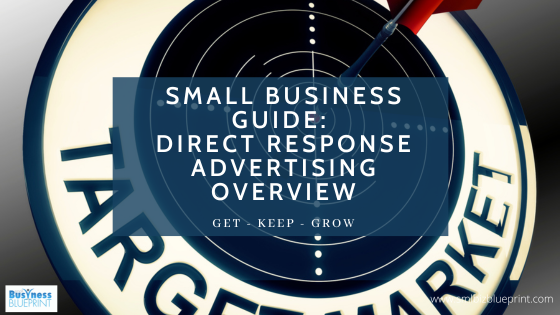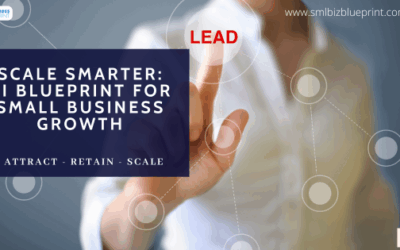In the fiercely competitive landscape of modern marketing, mastering direct-response advertising is not just an option but a necessity for businesses aiming for immediate and measurable results.
Unlike traditional advertising, which often seeks to build brand awareness over time, direct response advertising cuts straight to the chase. Its primary objective?
To invoke immediate action from the audience, whether purchasing, signing up for a newsletter, or downloading a whitepaper.

This guide will give you an overview of Direct Response Advertising and how to make it work for your business.
1 The Core Elements of Direct Response Advertising
To excel in direct response advertising, understanding its core elements is crucial.
These elements are a campaign’s building blocks that capture attention and drive action.
Let’s delve into these key features:
Clear Call-to-Actions (CTAs): The heart of any direct response campaign, a well-crafted CTA, is direct, compelling, and impossible to overlook.
Urgency: Crafting a sense of urgency isn’t just about telling your audience they need to act fast; it’s about making them feel they can’t afford to wait.
Offer Details: Be transparent and enticing with what you’re offering. Clear, attractive offers lead to better conversion rates.
Measurable Results: The beauty of direct response advertising lies in its ability to be measured and analysed for effectiveness.
Keys
Craft Engaging CTAs: Make your calls-to-action (CTAs) clear, compelling, and easy to follow.
Emphasise Urgency: Use time-sensitive language or limited offers to create a sense of urgency.
Track Your Results: Implement tools to measure the effectiveness of your campaigns, focusing on metrics like conversion rates.
2 Designing a Successful Direct Response Campaign
The key to a successful direct-response campaign lies in a message that resonates.
This means understanding your audience’s desires and fears and crafting a message that speaks directly to them. It’s not just about selling a product or service; it’s about offering a solution to a problem they are experiencing.
The headline is often the first element that captures the audience’s attention and can significantly impact the campaign’s effectiveness.
Here are key aspects to consider when discussing guidelines for crafting effective headlines:
Clarity and Relevance:
The headline should clearly convey the essence of the offer or message. It must be directly relevant to the target audience, addressing their interests, needs, or pain points.
Use of Power Words and Emotional Triggers:
Incorporating power words or emotionally charged language can make the headline more compelling. These words should evoke curiosity, urgency, excitement, or relevance, prompting the reader to engage further with the content.
Promise and Value Proposition:
Your headline should imply a promise or value proposition to the reader. It needs to communicate what the reader stands to gain or learn from engaging with the ad. This could be a solution to a problem, a special offer, or an opportunity for improvement.
Brevity and Impact:
A headline should be concise yet impactful. It must convey the message in as few words as possible while being powerful and clear. This brevity ensures that the headline is easy to read and understand at a glance.
Testing and Optimization:
Testing allows advertisers to understand which headlines resonate most with their target audience, leading to better engagement and conversion rates.
Avoiding Clickbait:
Don’t use headlines that might be misleading or over-promise (clickbait). Such headlines can damage credibility and trust with the audience.
Visuals and Design:
Your campaign’s visual aspect can make or break its effectiveness. A well-designed ad with eye-catching graphics and a professional layout can significantly increase engagement. Remember, the visual design should support and enhance your message, not overshadow it.
Creating a Sense of Urgency:
Urgency is a powerful motivator. Phrases like “limited time offer” or “while supplies last” can compel your audience to act now rather than later. But be careful – overuse or insincere urgency can lead to scepticism and distrust.
Keys
Compelling Message: Use storytelling to connect with your audience and make your message relatable.
Visuals and Design: Use high-quality images and a consistent design theme that aligns with your brand.
Urgency: Balance urgency with value, ensuring your message doesn’t become too pushy.

3 The Role of Different Channels in Direct Response Advertising
Each channel, from email to social media, has strengths and requires different approaches.
For instance, email is excellent for personalised, direct communication, while social media might be more suited for broader, more engaging content.
The key is matching the channel to your campaign’s goals and audience’s preferences.
Keys
Channel Suitability: Choose channels your target audience frequents and tailor your message accordingly.
Consistent Messaging: Ensure your campaign message is consistent across all channels.
Test and Optimize: Regularly test different channels and approaches to find the best for your audience.
4 Measuring and Analyzing Campaign Effectiveness
Tracking and analysing your campaign is crucial. This isn’t just about counting clicks or views; it’s about understanding how those metrics translate into business results.
Tools like Google Analytics and social media insights can offer a wealth of data to help you refine your campaigns for better performance.
Keys
Use Analytics Tools: Leverage tools like Google Analytics to track user behaviour and campaign performance.
Set Key Performance Indicators (KPIs): Define what success looks like for your campaign with specific KPIs.
Regular Review and Adjustments: Periodically review campaign data and make necessary adjustments for improvement.
5 Common Pitfalls to Avoid in Direct Response Advertising
Even the most well-planned campaigns can fall flat if common pitfalls are not avoided.
These include ignoring the importance of A/B testing, neglecting the follow-up, and failing to personalise the message.
Keys
Avoid Overcomplicating Messages: Keep your message simple and focused.
Don’t Neglect the Follow-Up: Plan for post-response engagement to build longer-term customer relationships.
Personalise Your Approach: Use customer data to personalise your ads, avoiding a one-size-fits-all approach.

6 Best Practices
To ensure the success of your direct response campaigns, always keep the customer journey in mind, test different versions of your ads, and stay up-to-date with the latest marketing trends and technologies.
Keys
Continuous Learning: Stay updated with the latest trends and techniques in direct-response advertising.
Expert Advice: Seek advice from industry experts or consider professional training.
Innovate and Experiment: Be open to new approaches and innovative ideas in your campaigns.
Must Haves
The Core Elements of Direct Response Advertising:
Understanding the foundational elements is critical. This includes a clear Call-to-Action (CTA), creating a sense of urgency, offering detailed and attractive propositions, and having the ability to measure results. These elements are the backbone of any effective direct-response campaign, as they directly influence how the audience interacts with the ad and takes immediate action.
Target Audience and Channel Selection:
Knowing the target audience is essential for crafting resonating messages and choosing the right channels for distribution. Different audiences have different preferences and behaviours, so it is crucial to understand who the audience is (demographics, interests, behaviours) and where they are most likely to engage (email, social media, direct mail, digital ads). This knowledge ensures that the message not only reaches the intended audience but does so in a manner that is most likely to elicit a response.
Measuring and Analyzing Campaign Effectiveness:
The ability to track and analyse the performance of direct response campaigns is vital. Understanding key performance indicators (KPIs) and having a system to measure these metrics allows for assessing the campaign’s effectiveness. It also enables continuous improvement through data-driven insights. By analysing campaign data, businesses can make informed decisions about adjusting and optimising their strategies for better results.
Additional Options
Leverage Storytelling in Unexpected Ways:
While storytelling is a known persuasive tool, using it unconventionally in direct-response advertising can be particularly impactful. For instance, crafting a short, compelling narrative that takes the reader on an emotional journey can be more engaging than traditional sales pitches. This could be a customer success story, a dramatic representation of the problem your product solves, or a creative fictional scenario that illustrates the benefits of your offer.
Utilise Psychological Triggers:
Beyond the typical urgency and scarcity tactics, delve into deeper psychological triggers such as social proof, authority, or the fear of missing out (FOMO). For instance, incorporating elements of social proof like customer testimonials or expert endorsements in an unusual or highly creative manner can significantly boost the effectiveness of your campaign. This could be an interactive social media campaign, a unique video testimonial series, or featuring real-time customer engagement stats.
Interactive and Gamified Elements:
Integrating interactive or gamified aspects into your direct-response advertising can significantly increase engagement. This could be as simple as a quiz on your product or service, a virtual scavenger hunt leading to a special offer, or an interactive infographic. These elements engage the audience and provide a memorable experience, making your message more likely to resonate and lead to action.
In summary, mastering direct response advertising is about understanding your audience, creating compelling messages, choosing the right channels, and constantly measuring and refining your approach. With these strategies, you can achieve immediate and impactful results.
FAQs
Q1: What makes a good CTA in direct response advertising?
A1: A good Call-to-Action (CTA) is clear, concise, and compelling. It should create a sense of urgency and offer the audience a specific, easy-to-understand action. The CTA must align with the campaign’s message and stand out visually.
Q2: How often should I test my direct response campaigns?
A2: Continual testing is key. Ideally, you should test different elements of your campaign (like CTAs, visuals, and messaging) with each new campaign or periodically within ongoing campaigns. This helps in understanding what resonates best with your audience.
Q3: Can small businesses compete with larger ones in direct response advertising?
A3: Absolutely. Direct response advertising levels the playing field, allowing small businesses to achieve significant impact with well-targeted campaigns and clever messaging. It’s more about how well you understand your audience than the size of your budget.
Q4: What are some common mistakes to avoid in email marketing?
A4: Common mistakes include not segmenting your audience, sending too many or too few emails, neglecting mobile optimisation, and failing to include a clear CTA. Also, avoid overly salesy language that can turn off recipients.
Q5: How important is mobile optimisation in direct response advertising?
A5: Extremely important. With most users accessing emails and social media via mobile devices, your campaigns must be optimised for mobile. This means ensuring emails and ads are responsive and readable on small screens.
Q6: How do I balance creating urgency without seeming pushy?
A6: The key is to focus on your offer’s value rather than just the time sensitivity. Use language that emphasises the benefits of acting now without overdoing the pressure. Authenticity and relevance are crucial.
Q7: What are the most effective digital channels for direct response advertising?
A7: This depends on your audience and industry. Generally, email, social media, and search engine ads are highly effective. However, it’s essential to understand where your target audience spends their time and tailor your approach accordingly.




